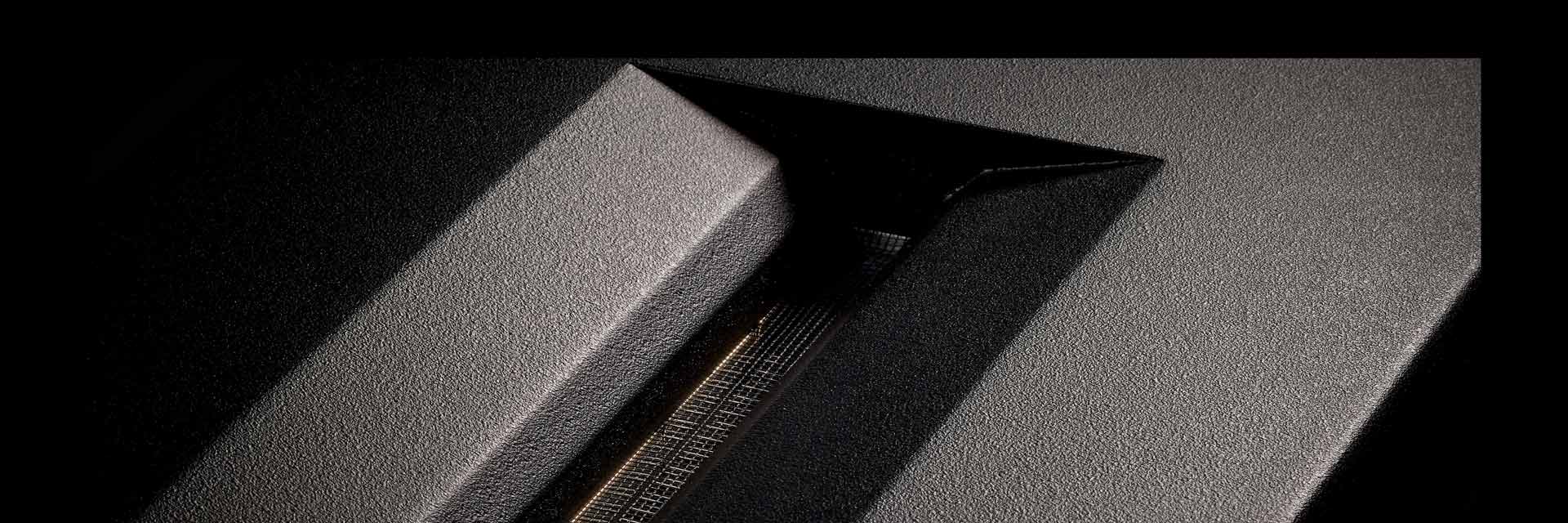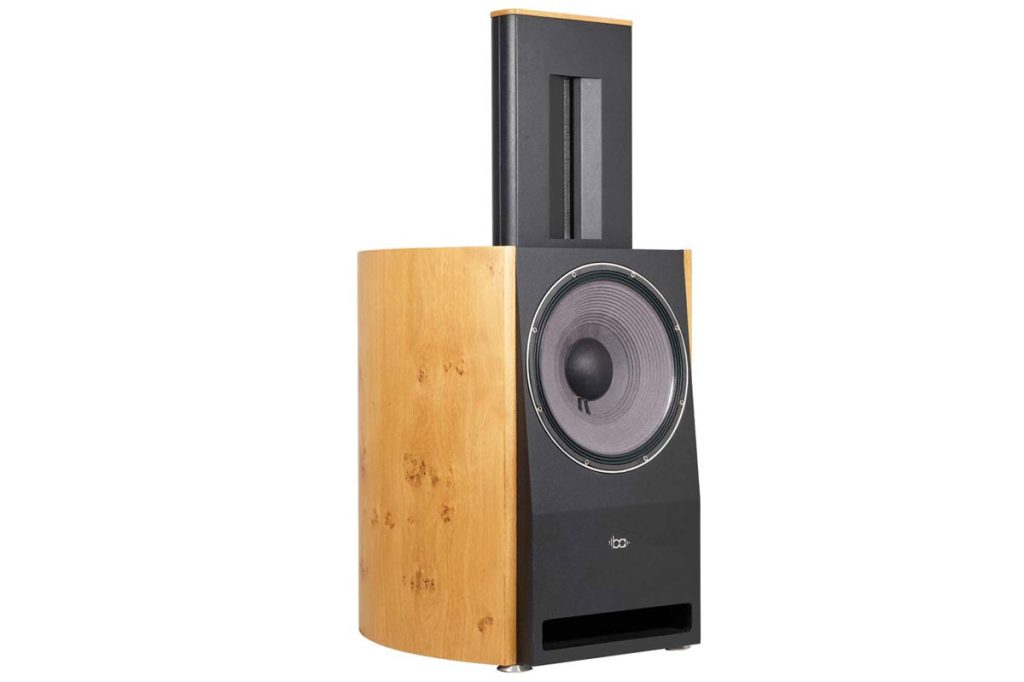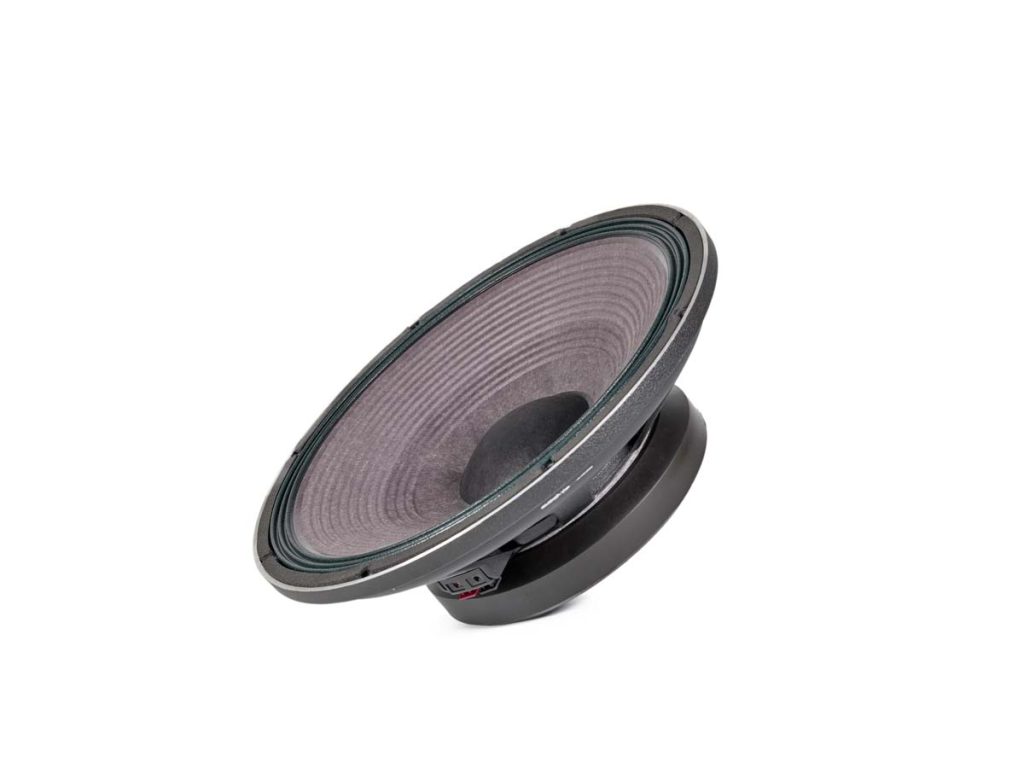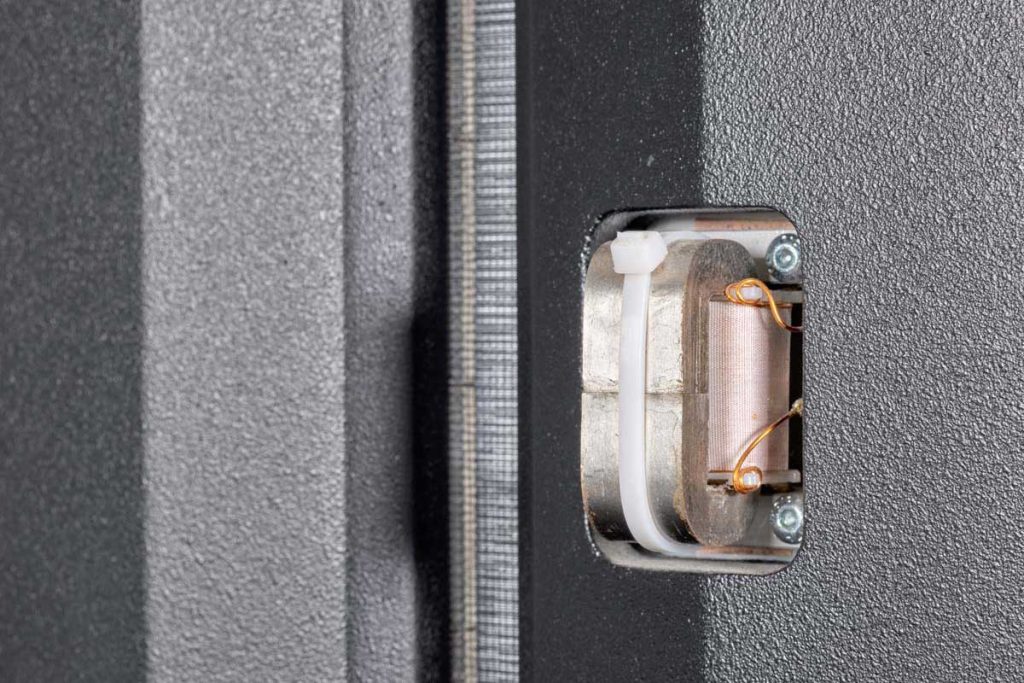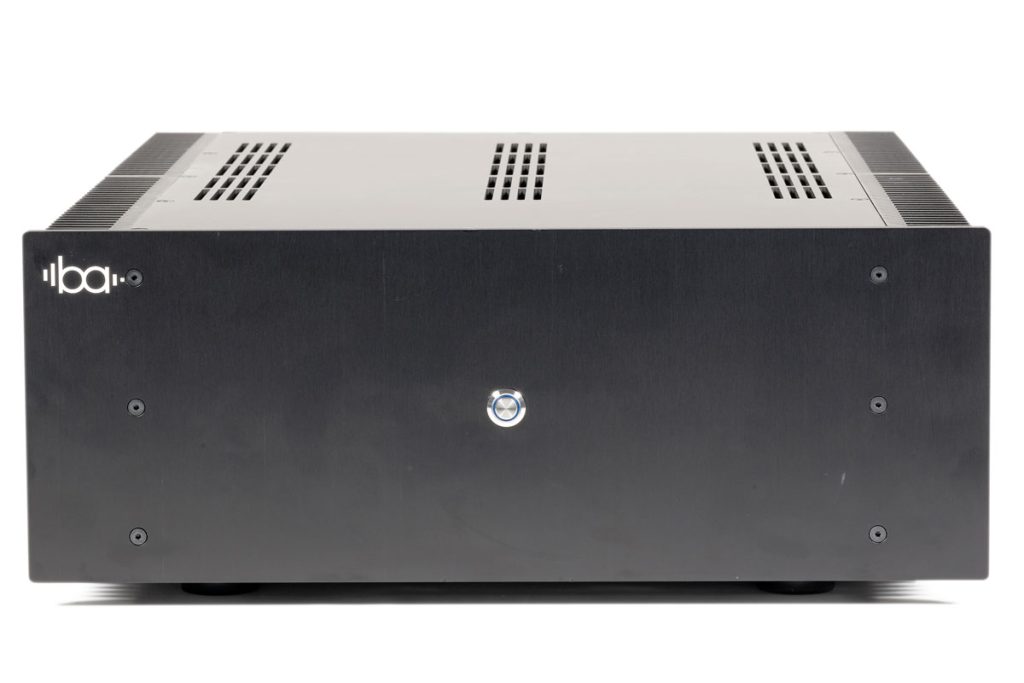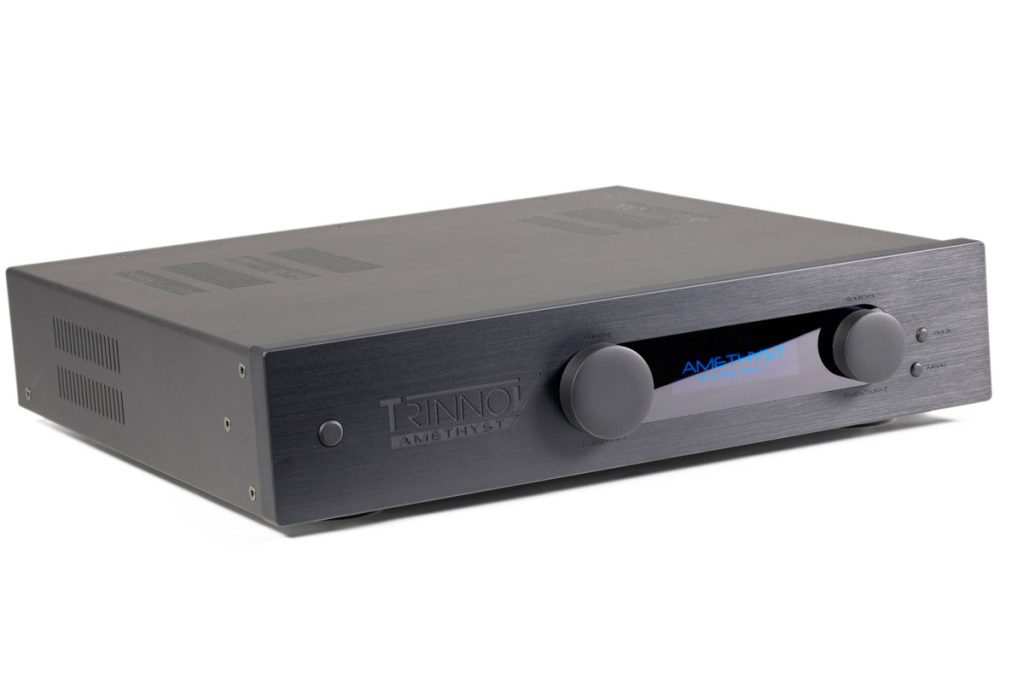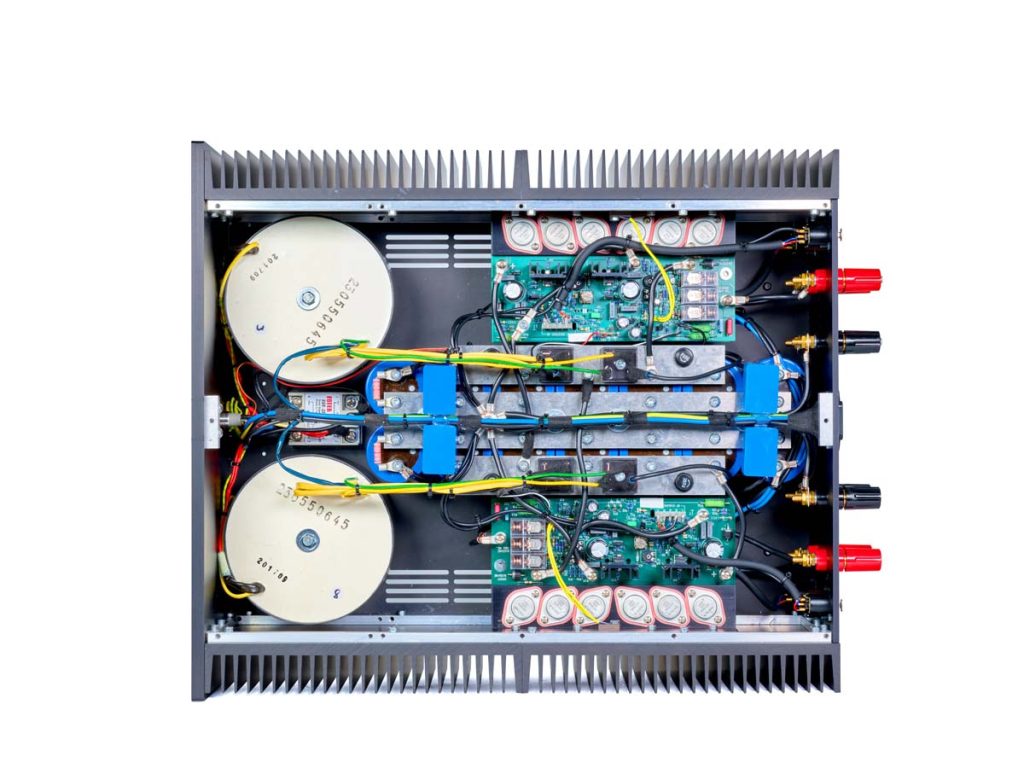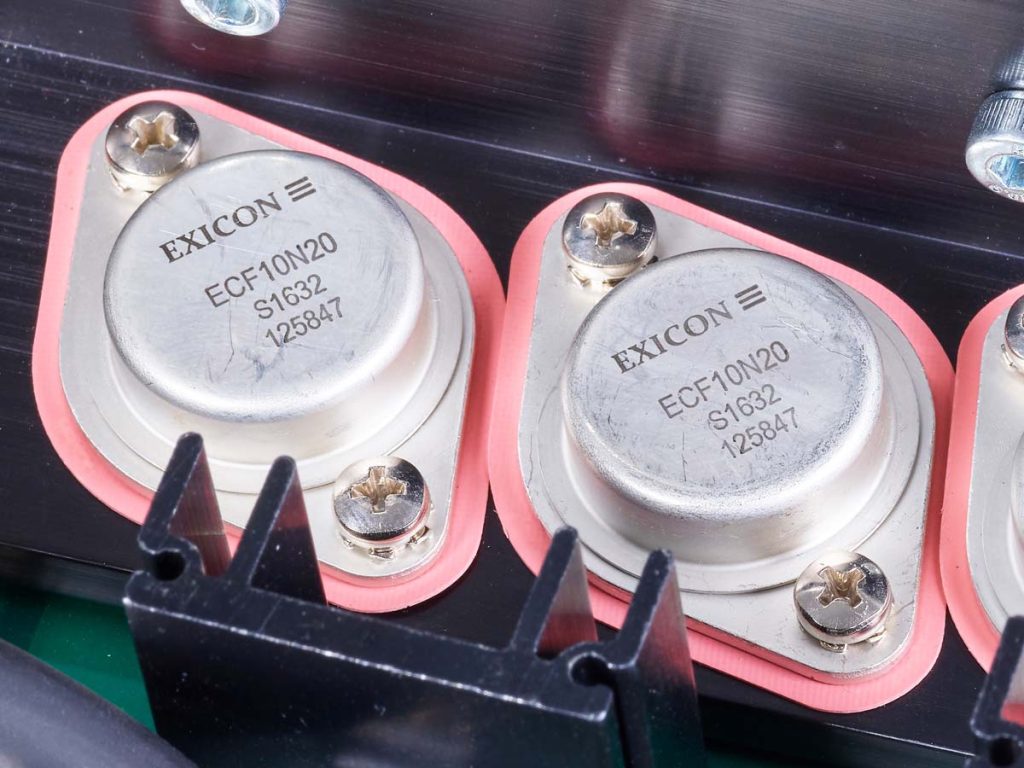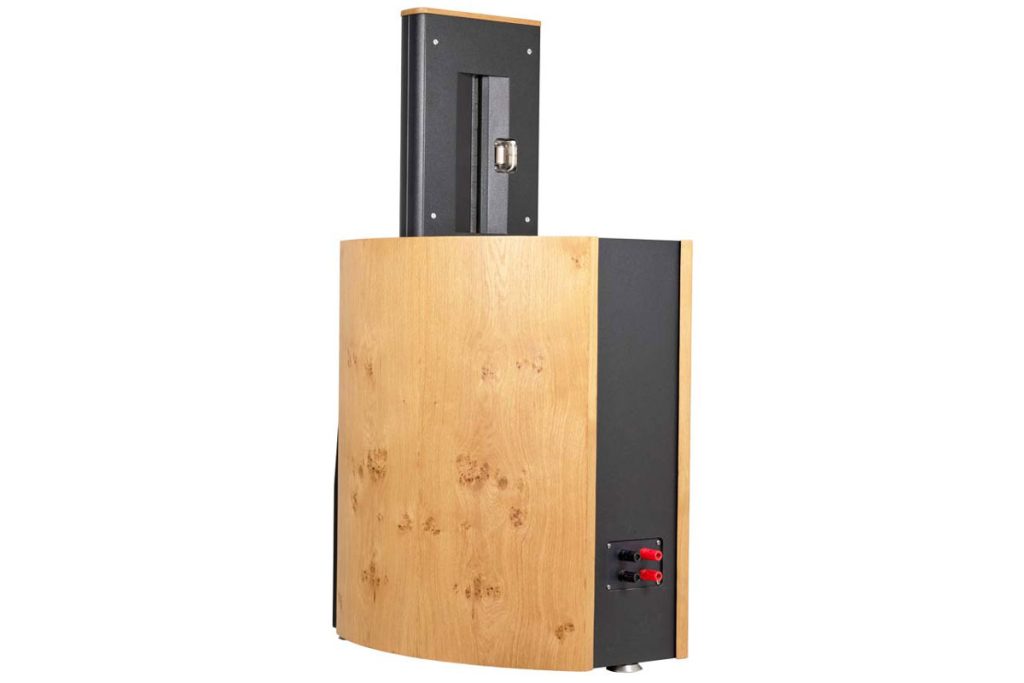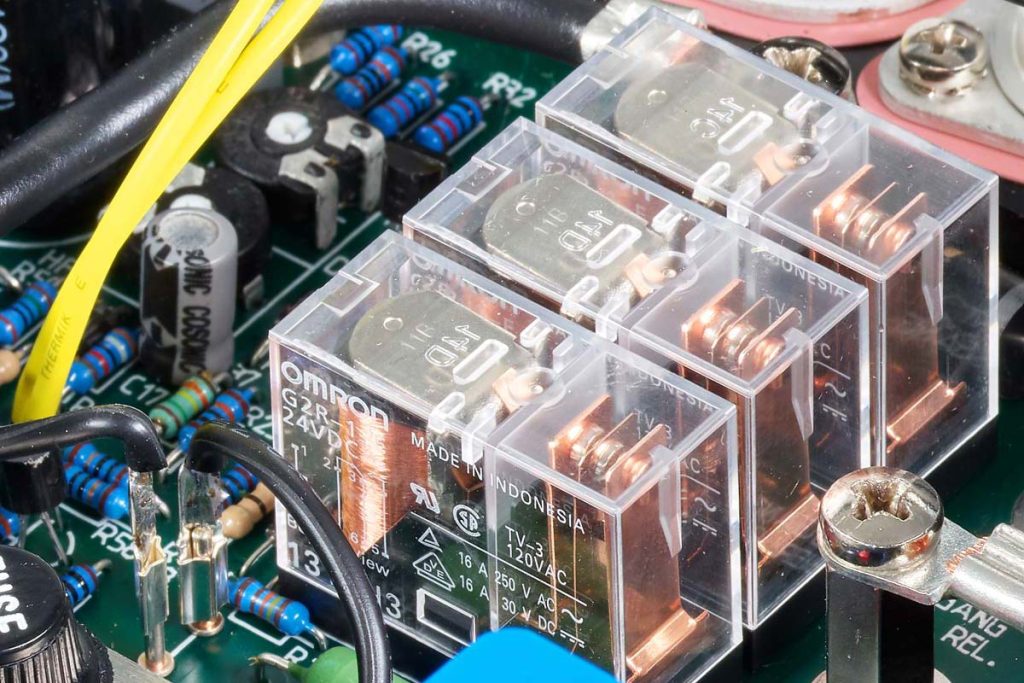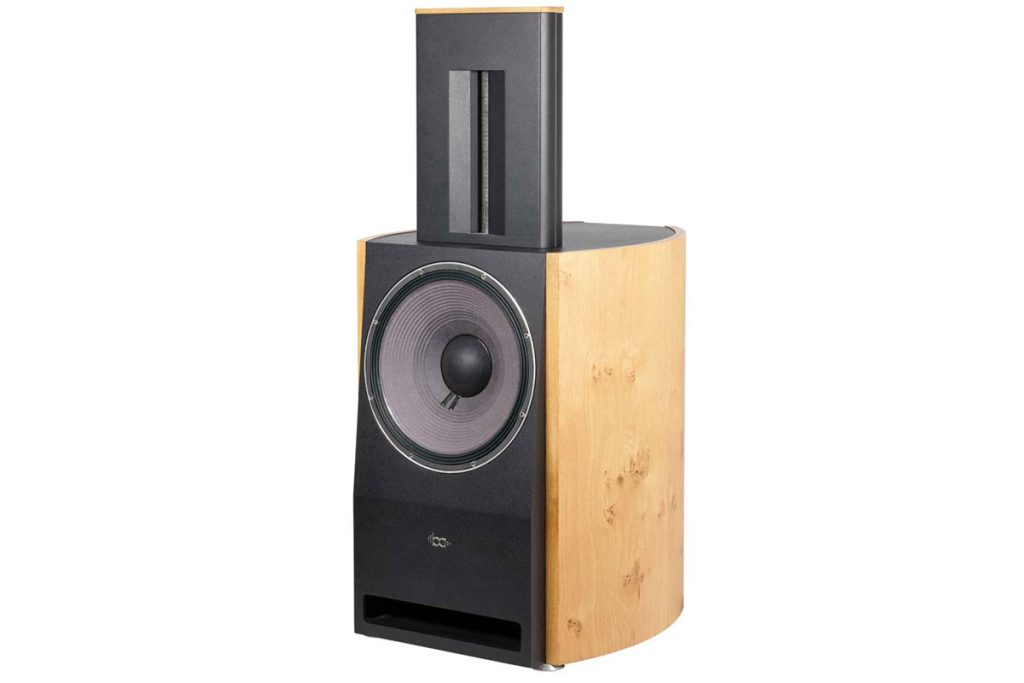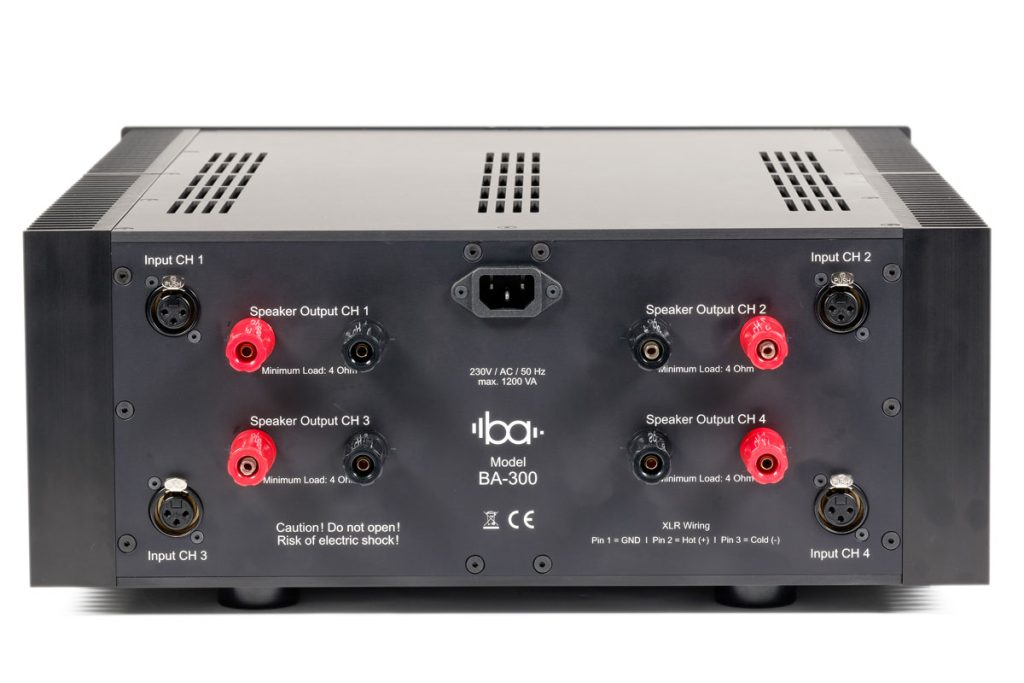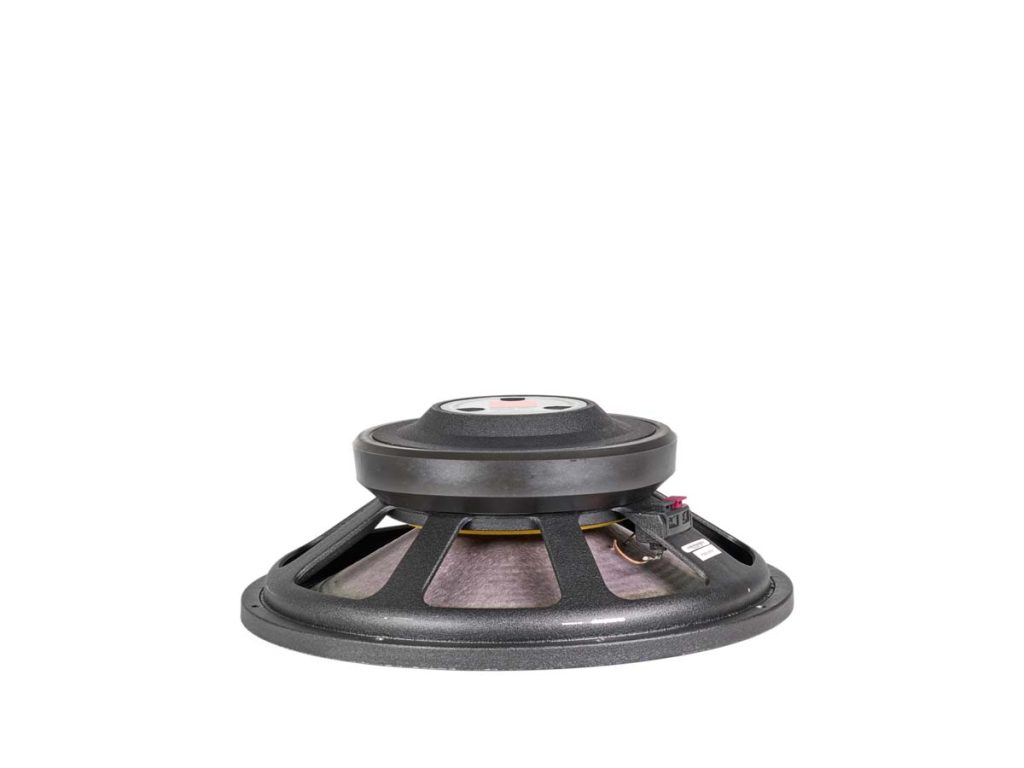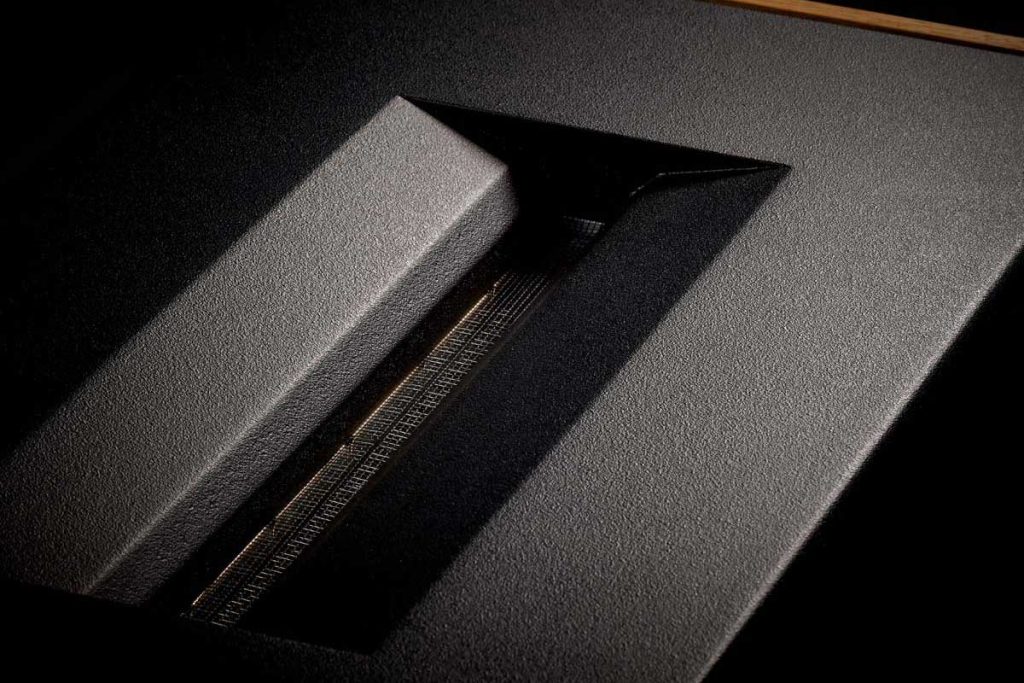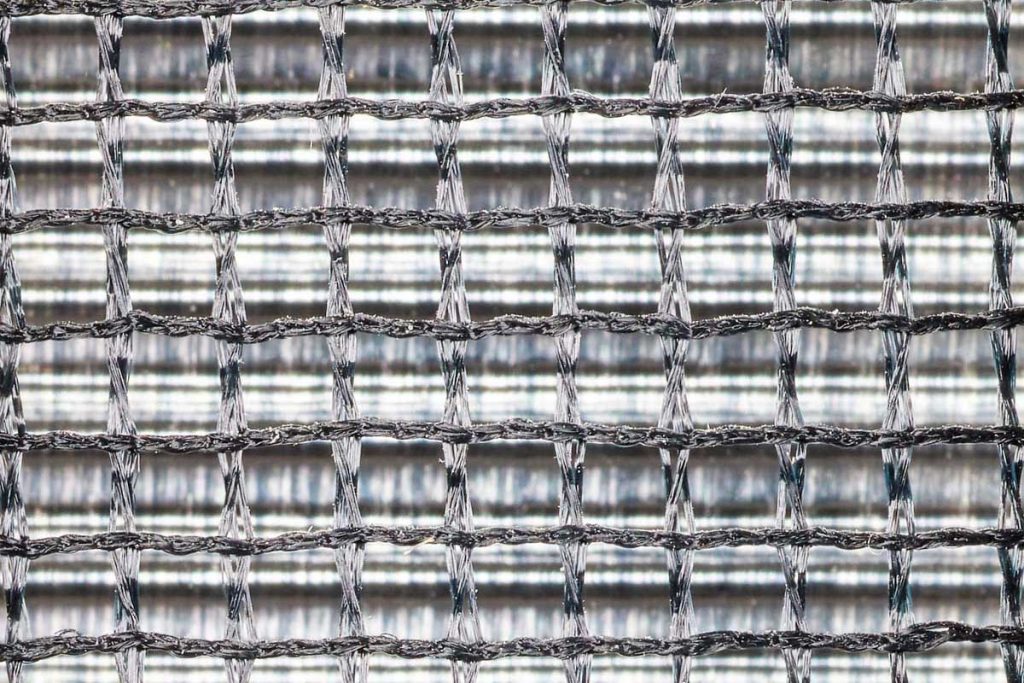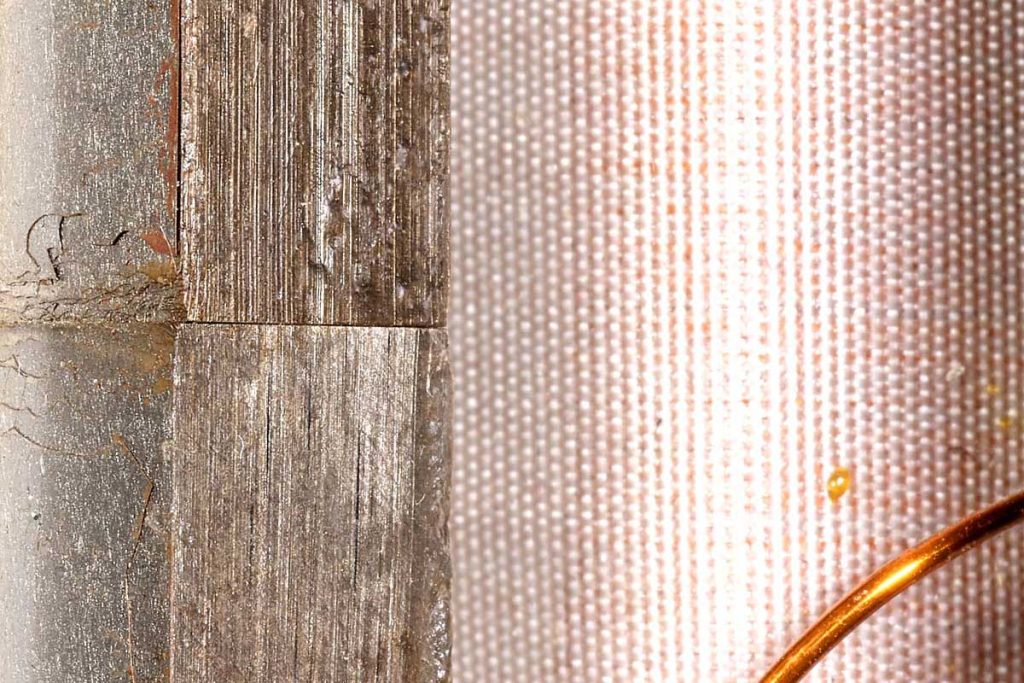No Filter
Loudspeakers like the Bohne BB-15 are just the last link in the innovative Bohne system’s chain.
Partially active or fully active and digitally equalized. For years, I’ve been adjusting to the major revolution on the loudspeaker market that saw a return to amplification and sound conversion forming one single optimized unit. But the pace of technical development is accelerating and the capabilities of digital active crossovers are growing faster than what’s evident in terms of market penetration. High-end customers are clearly sticking to the often tough, laborious, and tedious process of pairing amplifiers and passive loudspeakers. Fully active, digital systems such as those from Jörg Bohne do, however, really demonstrate precisely what modern, perfectly coordinated components are capable of. And no matter how many times you read the taboo word “digital” in the product description, the BB-15s still don’t lose any of their charming qualities.
You could do a lot worse than turn to a 15-inch JBL chassis, modified by none other than Bohne himself, when creating the basis of your full-range loudspeaker. The luxury chassis is assembled in such a way that the Bohne BB-15 instantly indicates it has no plans to blend in quietly or just assume the role of accommodating pleaser. The woofer’s screws could’ve also been concealed behind a cover or the woofer itself could have been screwed into a waveguide from behind. The BB-15 does not, however, feature any superfluous embellishments — an observation that also applies to the sound it produces. The chassis’s main selling point is and remains the long midrange tweeter ribbon, which was fully developed in-house at Bohne Audio and enjoys at least an equally long history. You should also know that when it comes to tweeters, Bohne really is the man. He’s been responsible for creating entire family units of silk dome tweeters and family trees of related ribbons. Only the most resilient models survived with him longer than the intro to “Stairway to Heaven;” the majority took the elevator, just to stick with the same metaphor. Bohne has nothing against horns (a possible solution to the dilemma), but he does see them as outdated. Compensating for insufficient amplifier power means applying efficiency, which in turn comes at the price of tonal discolorations; the original reason for using horns has since, however, grown obsolete as amplifier power is now virtually unlimited. Bohne also didn’t want to forgo the high resolution of a ribbon tweeter just because there wasn’t a sufficiently resilient model available on the market. What’s more, his two-way concept had been determined, and many air motion transformers (AMTs) or such qualitatively comparable alternatives as ion or beryllium tweeters can only be used in excess of 2,000 hertz. This meant he had no other option than to develop his own ribbon.
The BB-15’s specially coated aluminum ribbon is 30 centimeters long and kicks in as early as 650 hertz, joining the musical event with a very steep slope. For this type of mid-range tweeter that is extraordinarily low and provides an indication of the Bohne system’s power handling capacity. The ribbon is housed in a sturdy structure that uses simple socket outlets and plugs for the electrical connection and is locked into place in the bass reflex’s body. It also has a specially wound transformer in the, not to be ignored, open back — so it’s a dipole ribbon. Such two-way concepts with ribbons often lack pressure and color in the mid-range, particularly when large-diameter basses are involved. Luckily, the same cannot be said of the Bohne BB-15, which delivers high resolution in the treble and liveliness in the mid-range in equal measure, however both without any added extras, embellishments, or artificial warmth. The BB-15 creates that live sensation, which also means there’s a sense of absolute dryness and directness — an effect that could initially prove rather disconcerting for hi-fi-conditioned ears.
And that essentially pretty much sums up the sound description. Otherwise, you’ll get the impression you’re reading a standard loudspeaker test report. However, a test with the main goal of trying to assess the developer’s sound philosophy on the basis of his or her fine-tuning is out of the question for the BB-15. Those of us used to passive loudspeakers with conventional crossovers need to change our thinking: Apart from insulating materials, the inside of a Bohne BB-15 consists of just the JBL PA driver; even the ribbon isn’t protected by a resistor or capacitor. That means both chassis are, so to speak, directly attached to the loudspeaker cable if you disregard the ribbon’s necessary transformer. I would take this moment to remind you of the atrocities from Bohne’s past and urge you to learn the relevant lessons from them: Don’t simply connect an output stage to the BB-15 or fail to pay enough attention to the cabling. This can spell the premature end of the ribbon.
Fully active and digitally equalized playback must begin with amplification in order to assign the drivers their operating ranges. That doesn’t mean you have to abandon your beloved output stages or refrain from carrying out sound comparisons between different manufacturers’ amplifiers. It just means it doesn’t make much sense anymore once you’ve heard Bohne Audio’s full package. This includes a DSP preamplifier, in our case the top, most expensive model, the Trinnov Amethyst, as reviewed in FIDELITY No. 33. The term “DSP preamplifier” does not, however, do it justice as the Amethyst is in fact a powerful Linux streamer with AD/DA converter and phono preamplifier and is super easy to operate despite its complexities: It streams simply and wirelessly, and is fully compatible with Roon. As delivered by Bohne, this extremely multitalented control center of the future fundamentally knows about crossover frequency and damping thanks to an active two-way crossover, and yet it gives listeners plenty of freedom to adjust the sound profile to meet their own specific needs.
This starts with room correction using a 3-D microphone. Experienced hobbyists could definitely manage this themselves with the Trinnov, but Bohne likes to keep a firm grip on this important task himself. Even in the FIDELITY listening room, the very likable developer started by first creating optimum conditions. Our sofa usually sits on two euro pallets, thus raising its height by just under 15 centimeters, as in particular powerful floor-standing loudspeakers often sound better like that. The pallets actually got the chop before the room measurements were even started. Thanks to Bohne’s tried-andtested routine, the entire process took less than 15 minutes: first position the measurement microphone, then analyze the frequency response in the room using optimizer software and correct immediately. He quickly identified and ironed out any problematic exaggerations. In my opinion, the result was clearly discernible and significantly better.
Bohne Audio offers even more cost-effective solutions as alternatives to the Trinnov preamplifier; but of course any standard and commercially available digital signal processor could essentially be looped in. However, the Amethyst is so easy to operate and its equalizing presets make it such a practical option that it left an unforgettable impression on me. Moreover, you’ve got to assume that such a largely digital preamplifier will also have an impact on the sound. Bohne had, of course, also brought along the compatible BA-300 four-channel MOSFET power amplifier, manufactured in-house. Its black aluminum cuboid housing leaves it looking rather unremarkable, but it does contain very sophisticated circuitry and did make an excellent overall impression.
During the first hour after Bohne had successfully installed the BB-15s in the editorial team’s listening room, I flipped more or less arbitrarily through the Amethyst’s presets. Such flat frequency response may seem suitable for long listening sessions but paradoxically it can get boring rather quickly; a small increase of three decibels over the entire process afforded the playback a certain shine and spiritedness, but it also demanded attention; with playback that fills the room with a slight drop in the treble level you can, in contrast, easily hold a lively conversation. The dilemma inherent in this loudspeaker test became apparent right at the start: The way the Bohne BB-15 sounds depends precisely on how you drive it. There are no irreversible errors in the wiring that you could reinterpret as strokes of genius.
You can only see the BB-15’s true colors through abstraction. Silky treble, juicy mid-range, gnarly bass (the usual game) won’t cut it here; as the listener, you have these parameters in the palm of your hand. To assess the Bohne BB-15, you have to search for the faint nuances or perhaps even the original shape of the sound. Streamed hi-res files actually sound fantastic, but you can’t create mood lighting with neon lights, if you get my drift. In any case, despite all the attractive options, the source of the choice for breaking it in for my colleague Hans von Draminski’s fastidious ears was mostly the Seismograph, complete with Jelco arm, SteinMusic headshell, and Clearaudio Jubilee MC cartridge.
You first have to torture yourself with hysterical and lethargic musical jumbles such as “Leaving California” before being rewarded with such real gems as “A Woman A Man Walked By,” the title track of PJ Harvey’s album. It seemingly all begins harmlessly with a chicken recipe, but quickly escalates into a furious reckoning and revenge with all the little meaty parts — and that’s actually the least terrifying interpretation — before a cheerful instrumental slow train picks up and removes the remains of the song. Suddenly, string and wind instruments, familiar from horror films and contemporary classical music, destroy the idyllic moment again, and as the fade-out starts, you feel a sense of relief gain. I wouldn’t say the BB15s transport you onto this musical roller-coaster ride by “sweeping you away.” No, they rather push and shove you without warning to a place where you’re left to fend for yourself. These loudspeakers create a bone-dry live atmosphere that’s miles apart from overly sophisticated high end. The dynamics of the unbridled ribbon proved to be breathtaking, and even in the mid-range, where PJ Harvey’s voice meandered between menacingly resentful and psychopathically screechy, there was unquestionably one person, one voice, one (post-) punk sound source on the stage. Two tracks later, in “Pig Will Not,” in which she yaps like an exceedingly snappy lapdog, the Bohne ribbon didn’t sugarcoat a thing, and with her “fuck you, I’m more fucked up than you” attitude she extends a musical nod to Iggy Pop, not for the first time.
The powerful drum accompaniment was perfect for the JBL woofers: Completely faultless, despite bass reflex no sign of any delay dragging along behind, short and to the point, brief and concise, but full, physically tangible, without booming. I don’t want to sound overly gushy, as the successful room correction must have played a part in this, but, excluding actual live concerts, I can count on one hand the number of occasions when I’ve heard such uncompromisingly dry low-frequency playback. In contrast, many high-end loudspeakers, even in the highest price categories, sound downright like they were developed to move away from creating any impression of being live. To the best of my knowledge, I can say that overdamped competitors are mercilessly outranked by the punchy Bohne BB-15.
It almost seems a little unfair that the mid-tweeter ribbon so seamlessly connects to the powerful bass range. Of course, its offset location on the speaker wasn’t arbitrarily selected, and besides it’s calibrated to the listening position; but it remains especially astonishing how this thin strip of aluminum can replicate the body of an acoustic guitar, a grand piano, or a voice so perfectly even though the woofer’s solid base provides plenty of opportunity for it to seem too light. In contrast with PJ Harvey, Katie Melua sounds like a Disney version of a songwriter, nonetheless “Wonderful Life” somehow came across quite well afterward. And it’s revealing for the thrilling crossover range of the BB-15s. This track begins with nothing but a bright voice accompanied by an acoustic guitar, which let the ribbon freestyle and show exactly what it’s made for: As directly and innocently as a flower child, Melua warbled away as if she just happened to be sitting in front of me on a flokati rug. It was as if no technical production stood between us. At that moment I would have actually felt guilty about criticizing the overly pure voice glossing over the track’s nasty sarcasm. It was as if the casting-show winner could hear me as clearly as I could her. After around 30 seconds, the bass line kicked in and a second layer was added to the Black cover. The sound profile experienced more pressure but didn’t grow any fuller, the spotlighting and the musical fill level of the room no longer changed, the crossover range of the two very dissimilar chassis could not be discerned.
Opting for a loudspeaker concept like the one offered by Bohne Audio must be a conscious decision. The Bohne BB-15 will always tend to resist attempts to degrade it to a background sound system. Its unadorned, pared-down look commands attention and rewards you with a profound, enthralling musical experience. Loudspeakers for music lovers, not for high-end fans.
Accompanying equipment
Turntables: Seismograph 1, AVM Inspiration 2.3, Transrotor Alto, Audio Note TT2, Acoustic Solid Solid Wood MPX, Clearaudio Innovation and Performance DC | Tonearm: Jelco SA750L, SME 5009, WTB 213, Clearaudio Universal and Tracer | Headshell: SteinMusic Ametrin-1 | Cartridge: Etsuro Urushi, Clearaudio Jubilee MC and DaVinci, Transrotor Merlo Reference, Ortofon MC 30 Supreme | Phonostage preamplifiers: Trinnov Amethyst (integrated), Esoteric E-02, Lyric Audio PS10, Einstein The Phono Amp, Cambridge Audio Duo | CD-Player: Ayon CD-3sx | Preamplifier: Trinnov Amethyst, Audia Flight Strumento No. 1 Mk II, Cambridge Audio Edge NQ | Power Amplifier: Trinnov Amethyst, Audia Flight Strumento No. 4 Mk II, Cambridge Audio Edge NQ | Loundspeaker: B&W 603, Piega Coax 511 | Cable: Tara Labs, Lehr Audio, in-akustik, AudioQuest, Vovox | Accessories: Audio Replas, Clearaudio, SteinMusic, IsoTek, Subbase Audio, Solidsteel
Loudspeaker
Bohne Audio BB-15
Functional principle: active two-way loudspeaker, bass reflex | Frequency range: 25 Hz–24 kHz (-3 dB) | Driver complement: patented mid-range tweeter ribbon, modified JBL 15-inch woofer | Sensitivity: 97 dB (woofer), 99 dB (high-performance ribbon) | Max. sound pressure level: 123 dB | Crossover frequency: 650 Hz | Finishes: various veneers | Dimensions (H/W/D): 120/54/65 cm | Weight: 60 kg | Warranty periods: ten years for the loudspeaker and five years for the electronics | Price per pair: €21,900 (test package: €32,500)

